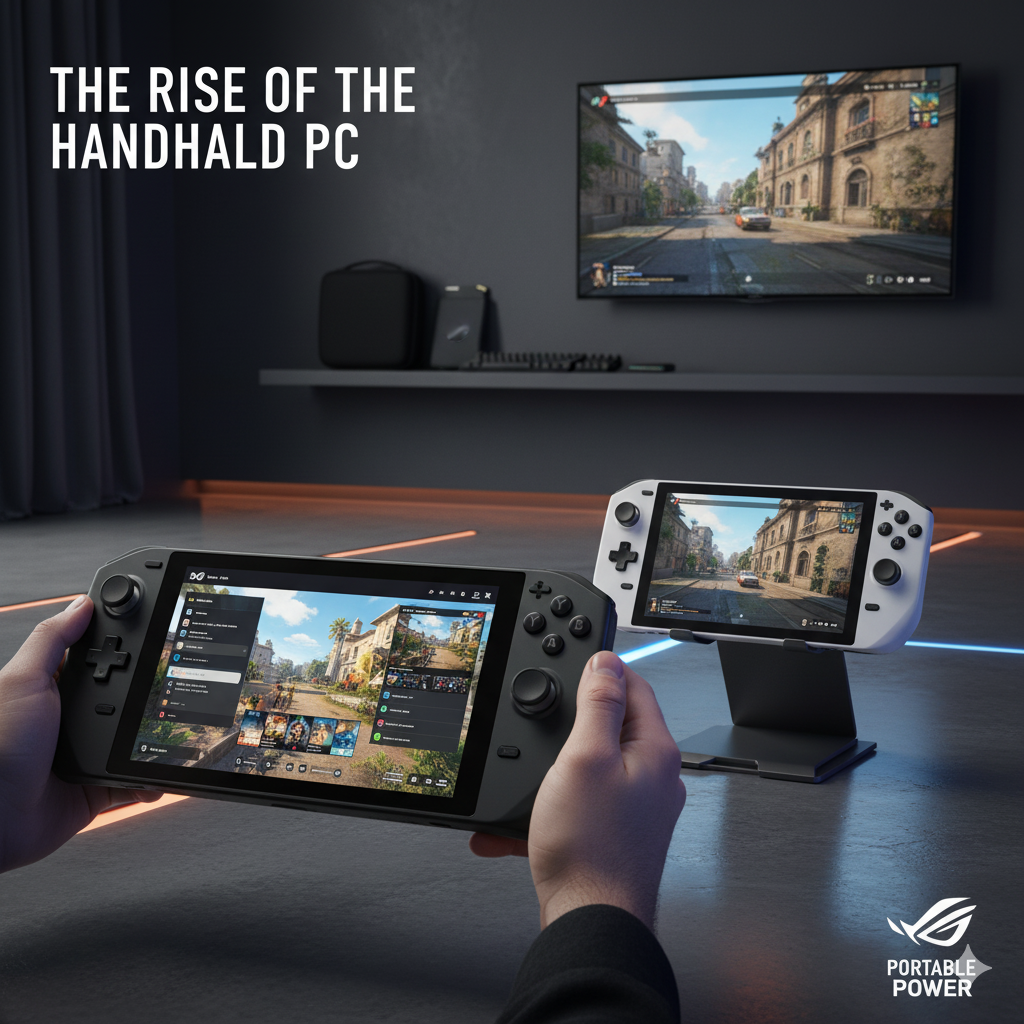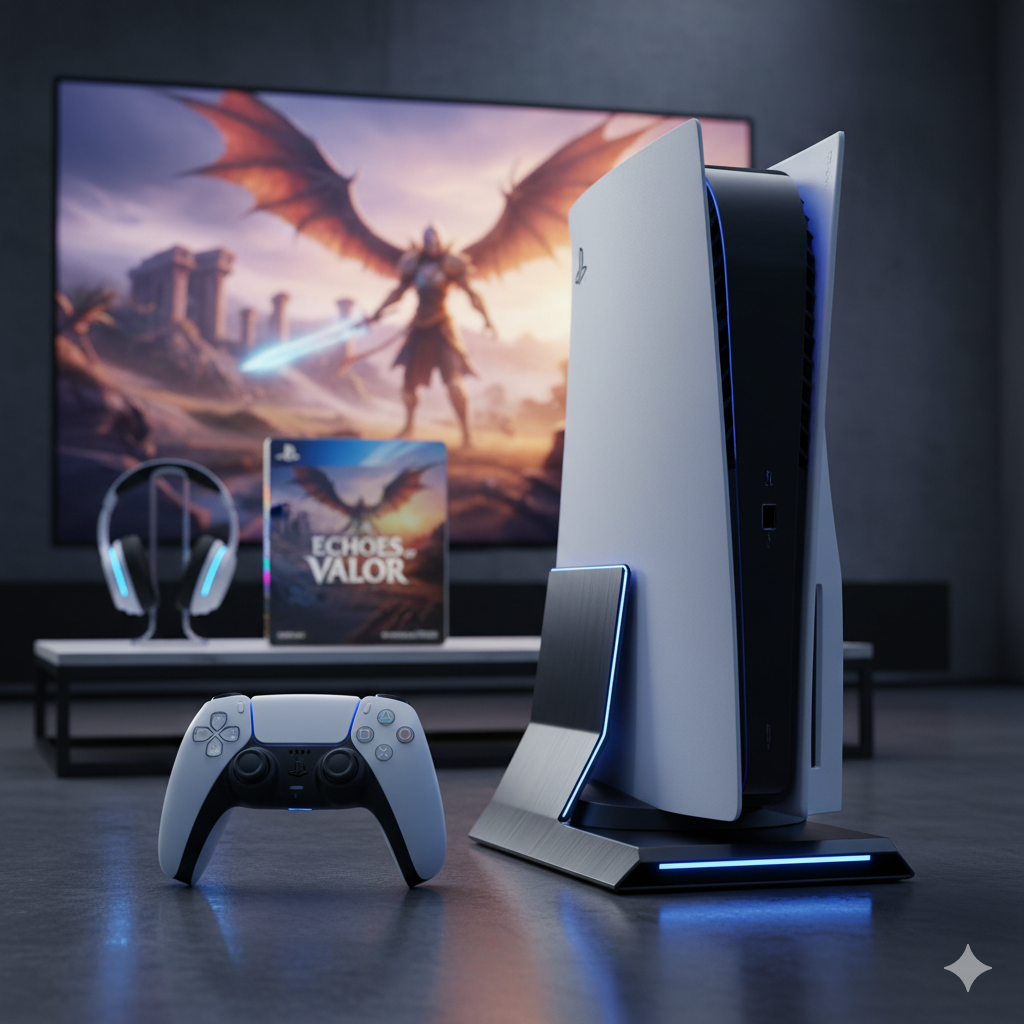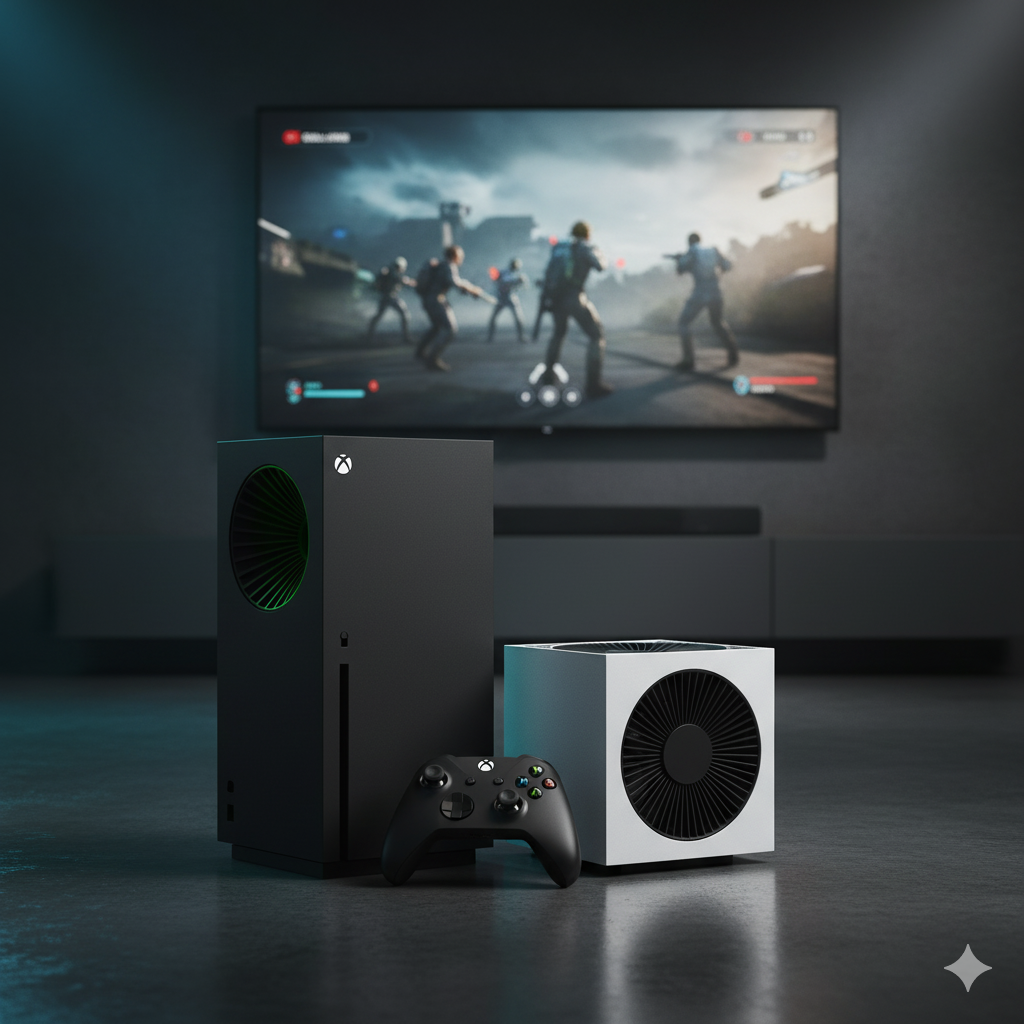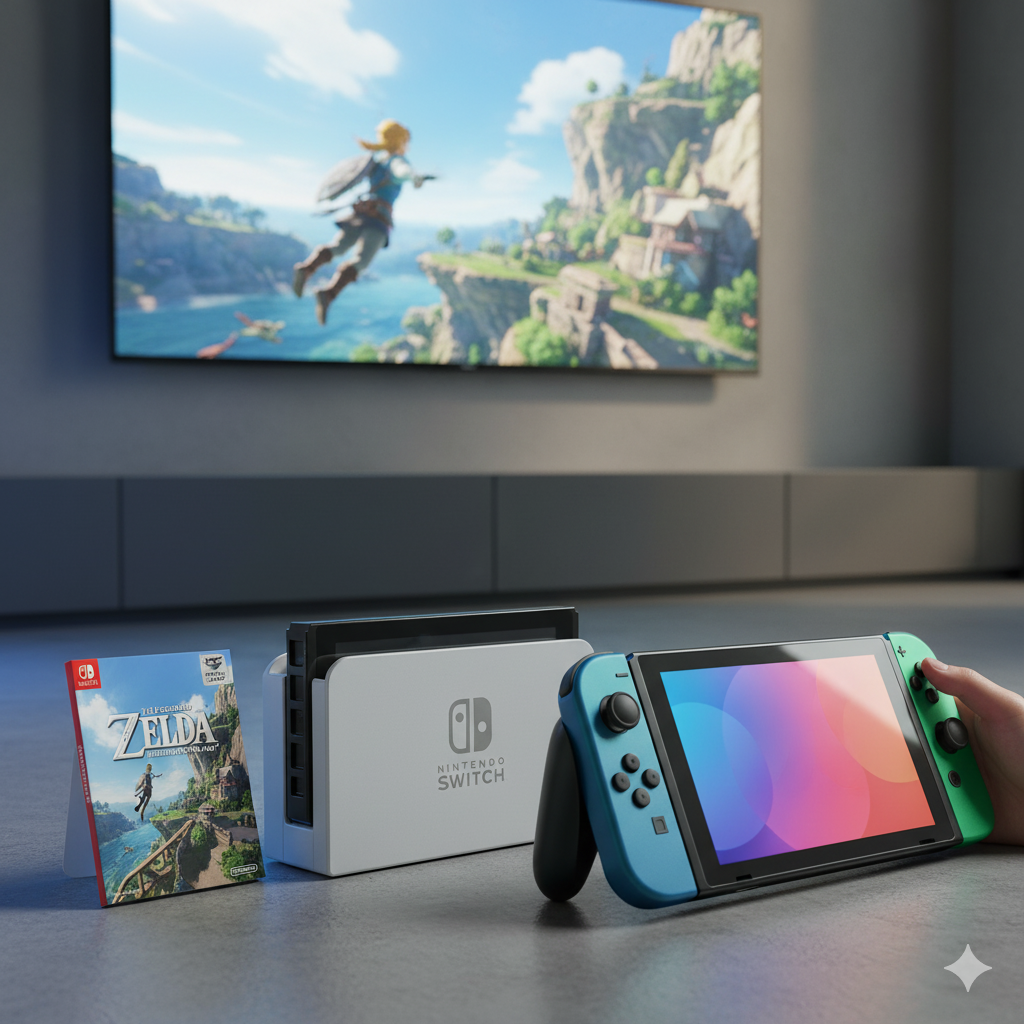For decades, the world of portable gaming was a straightforward affair, dominated by Nintendo’s innovative consoles and the casual convenience of mobile phones. The idea of playing the latest high-fidelity AAA titles from a PC library while on a bus or in a café seemed like a distant dream. That dream is now a reality. We are living in the era of the handheld PC, a new and electrifying frontier for portable power that merges the freedom of PC gaming with the form factor of a console.1
Led by pioneers like Valve’s Steam Deck, the ASUS ROG Ally, and the Lenovo Legion Go, these devices are not just “powerful consoles”—they are fully-fledged computers in the palm of your hand, and they are fundamentally changing what it means to be a PC gamer.
Defining a New Category: More Than a Console
So, what exactly is a handheld gaming PC? Unlike a Nintendo Switch or PlayStation Vita, which operate on closed, proprietary operating systems, these devices run on familiar PC platforms. The Steam Deck uses a custom, user-friendly version of Linux called SteamOS, while competitors like the ROG Ally and Legion Go run standard Windows 11.
This distinction is crucial. It means you aren’t just buying into one company’s ecosystem. You have access to a multitude of game launchers and libraries you may have invested in for years:
- Steam
- Epic Games Store
- GOG (Good Old Games)
- PC Game Pass
This versatility extends far beyond gaming. You can install mods, run emulation software for classic consoles, browse the web, watch movies, and even connect a monitor, keyboard, and mouse to use it as a portable desktop computer.
The Trailblazers: Meet the Key Players
The handheld PC market is exploding with options, but a few key players have defined the landscape.
- Valve’s Steam Deck: The device that started it all. The Steam Deck brought handheld PC gaming to the mainstream with a brilliant combination of affordability, comfortable ergonomics, and the seamless software integration of SteamOS.2 The updated OLED model, with its vibrant HDR screen and improved battery life, is considered by many to be the king of the category for its overall user experience and value.3
- ASUS ROG Ally: ASUS entered the ring with a focus on raw performance. Powered by the potent AMD Z1 Extreme chip, the ROG Ally can run games at higher frame rates and resolutions than the Steam Deck. Its bright, high-refresh-rate VRR screen provides incredibly smooth visuals, and running Windows 11 offers native access to services like PC Game Pass without any workarounds.
- Lenovo Legion Go: Lenovo’s offering stands out with its enormous, stunning 8.8-inch QHD+ screen, making it the most immersive display on a mainstream handheld.4 Its most unique feature is its detachable controllers, similar to the Nintendo Switch. The right controller can even be placed in a dock to function as a vertical mouse, a novel solution for playing first-person shooters.
These titans, along with other devices from MSI and Ayaneo, offer a spectrum of choices, prioritizing everything from screen size and performance to ergonomics and price.
Pros and Cons: Life on the New Frontier
This new category offers incredible freedom, but it comes with its own set of challenges. It’s a frontier, and frontiers can have rough edges.
Pros (The Power and the Freedom)
- Your Entire PC Library, Anywhere: The single biggest advantage. No need to re-buy games for a separate portable device. Your extensive Steam, Epic, and GOG libraries are ready to go.
- Unmatched Versatility: The ability to mod games, emulate everything from the SNES to the PS3, and use the device as a functional PC is something no traditional console can offer.
- True AAA Gaming on the Go: Playing titles like Cyberpunk 2077, Baldur’s Gate 3, or Elden Ring natively on a device you can fit in a backpack is a technical marvel.5
- No Subscription for Online Play: Unlike PlayStation and Xbox, most PC games do not require a paid subscription for online multiplayer.
- Access to PC Game Pass: Windows-based handhelds offer the best portable way to experience Microsoft’s incredible subscription service.
Cons (The Trade-Offs)
- Battery Life: This is the Achilles’ heel. While lighter indie games can last for hours, playing a demanding AAA title can drain the battery in as little as 60-90 minutes.
- Price and Size: These devices are generally more expensive and bulkier than a Nintendo Switch. Top-tier models can cost as much as a desktop console.
- The PC Learning Curve: This is not always a simple plug-and-play experience. You may need to tweak graphics settings, update drivers, and troubleshoot compatibility issues, especially on Windows devices.
- Heat and Fan Noise: Packing so much power into a small chassis generates significant heat and fan noise under load.
Frequently Asked Questions (FAQ)
Q1: What is the best handheld PC to buy in 2025?
A1: It depends on your priorities. The Steam Deck OLED is often recommended for its excellent user experience, value, and stunning screen. The ASUS ROG Ally is a great choice for those who want maximum performance and native access to PC Game Pass. The Lenovo Legion Go is ideal for gamers who prioritize a large, high-resolution screen.6
Q2: Can a handheld PC replace my gaming desktop or console?
A2: For many, yes. When docked to an external monitor, these devices are powerful enough for 1080p gaming and general productivity, making them a viable all-in-one solution. However, a dedicated high-end desktop will always offer more power.
Q3: How bad is the battery life, really?
A3: It varies wildly. Playing a simple 2D indie game might get you 6-8 hours. Playing a graphically intense AAA game with settings maxed out could drain the battery in just over an hour. Most users find a sweet spot that gives them around 2-3 hours of play in typical titles.
Q4: Do I need to be a tech expert to use one?
A4: Not necessarily, but it helps. The Steam Deck’s SteamOS is very user-friendly and console-like. Windows-based devices like the ROG Ally require a bit more PC knowledge to navigate and optimize.
Q5: Can I play games from the Epic Games Store or PC Game Pass on the Steam Deck?
A5: Yes, but it requires some tinkering. There are third-party launchers and workarounds created by the community to get these services running on the Linux-based SteamOS. Windows-based handhelds can run them natively without any extra steps.
Q6: Are these devices good for emulation?
A6: They are phenomenal for emulation. Their powerful processors can handle emulating a vast range of classic consoles, from 8-bit systems all the way up to the PlayStation 3 and, in some cases, even the Nintendo Switch itself.





Leave a Reply